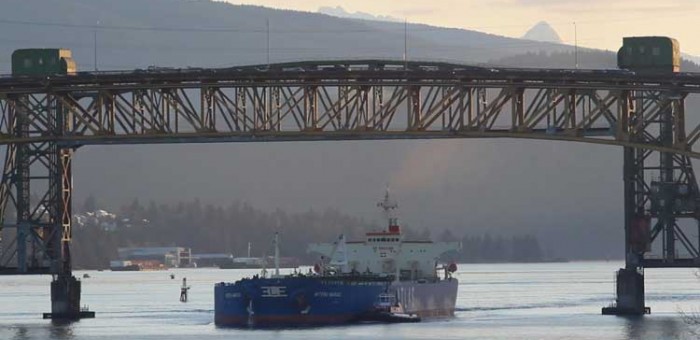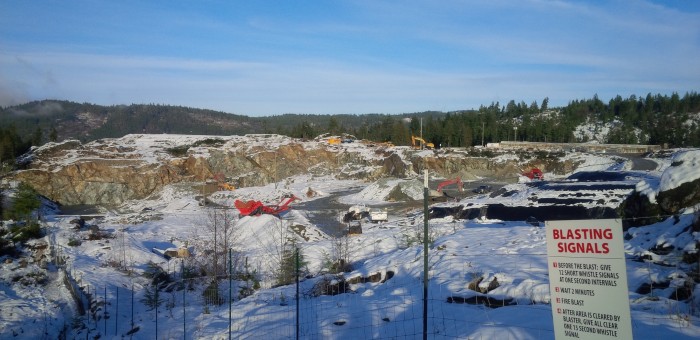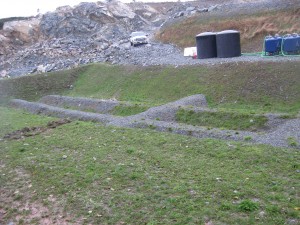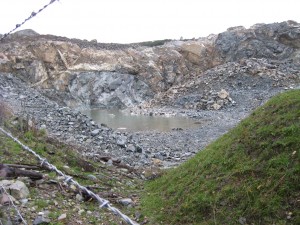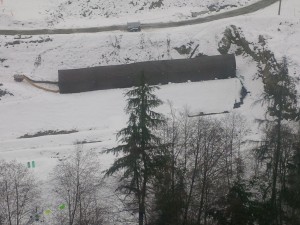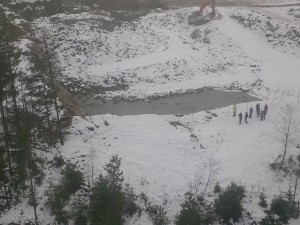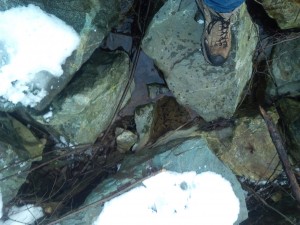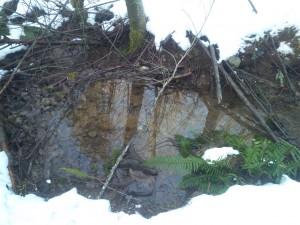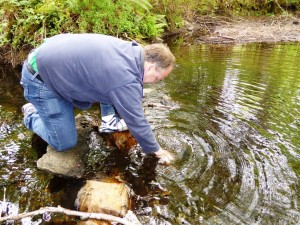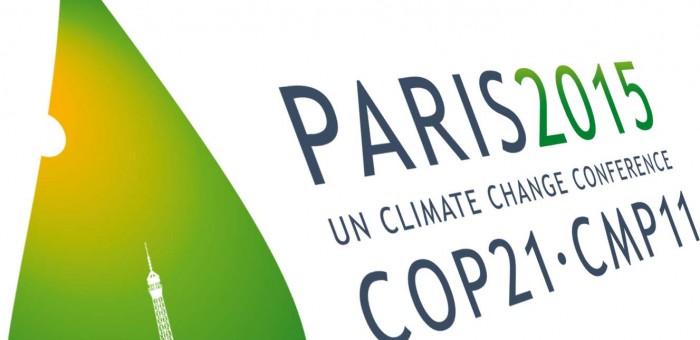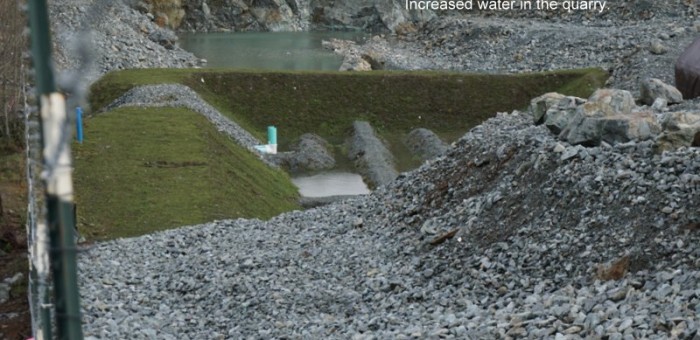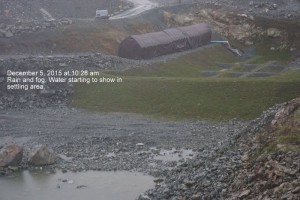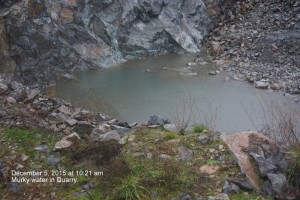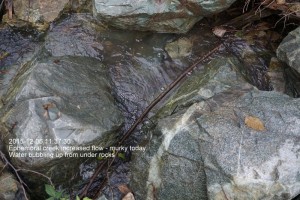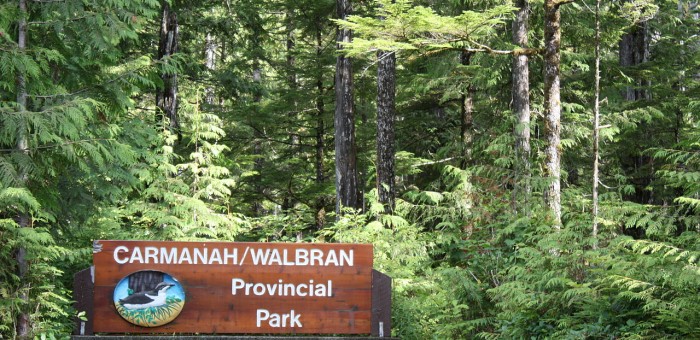Environment
Canada needs an immediate moratorium on shipping diluted bitumen in coastal BC Waters
Media Statement January 11, 2016
Canada needs an immediate moratorium on shipping diluted bitumen in coastal B.C. waters
For immediate release
Victoria B.C. – In light of the provincial government’s final submission to the Trans Mountain National Energy Board (NEB) hearings that described BC’s spill response capacities as insufficient, Andrew Weaver, MLA for Oak Bay – Gordon Head and Leader of the B.C. Green Party, is calling on the provincial and federal governments to establish a moratorium on the transport of diluted bitumen (dilbit) along our coast.
While encouraged to see the provincial government finally agreeing our coastline is unprepared to deal with a major dilbit spill, he notes that it is inconsistent with their continued approval of the bitumen-filled tankers that travel through our marine environment – currently at the average rate of one per week.
“The BC government is admitting one thing and allowing another,” says Andrew Weaver. “In 2013 I added a 6th condition – a complete ban on the shipment of dilbit along our coast – to the province’s five approval criteria. With a dangerously low ability to deal with spills and limited scientific understanding of how dilbit will interact with BC’s waters, that 6th condition is overdue and essential.”
Trans Mountain based their entire analysis of the fate and behaviour of (dilbit) in the marine environment on the faulty assumption that dilbit floats. Published evidence, together with a Federal government study, and assessment reports from both the Royal Society of Canada’s Expert Panel on The Behaviour and Environmental Impacts of Crude Oil Released into Aqueous Environments as well as the US National Academy of Sciences Committee on the Effects of Diluted Bitumen on the Environment, all of which Andrew submitted as evidence to the NEB, clearly conclude otherwise.
In its final submission to the NEB hearings the provincial government noted that Trans Mountain had not provided adequate information on spill prevention and response, therefore not meeting a key component of the provincial five conditions required for approval of heavy oil pipelines. However the government said they will continue to evaluate the project.
“The B.C. Government submission emphasizes what I and other intervenors have been saying throughout the hearing process. There simply is not an adequate response in place now, nor likely in the future, to deal with a diluted bitumen spill.” says Andrew Weaver, “I am calling on the Federal Government to halt all current shipments of dilbit. The risk is simply too high.”
Andrew Weaver’s final argument in the Trans Mountain Pipeline Expansion Hearing Process, submitted Friday January 8th, cited “substantive deficiencies” in Trans Mountain’s application and detailed their inability to provide adequate responses to intervenor’s questions. Because of these concerns, and the NEB’s failure to include cumulative upstream and downstream effects on climate, Andrew Weaver has urged the NEB to reject their application.
-30-
Media Contact
Mat Wright
– Press Secretary, Andrew Weaver MLA
1 250 216 3382
mat.wright@leg.bc.ca
More Samples, More Questions, More Concerns: Enough is Enough
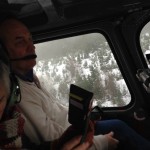 Background
Background
On January 6, 2016 concerned Shawnigan Lake residents invited the media, politicians and the public to come and see the contaminated soil facility operating on Stebbings Road and to listen to their concerns directly. Residents, local councillors and others were in attendance to answer questions. The media and politicians were also taken on helicopter rides over the site in order to get a bird’s eye view of the operations. Indeed I was one of the many politicians who was on one such helicopter ride.
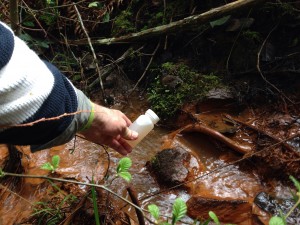 I have written earlier on the wisdom of dumping contaminated soils in the Shawnigan Lake watershed and I have twice collected samples from the effluent running off Lot 21, immediately beside the operating contaminated soil facility.
I have written earlier on the wisdom of dumping contaminated soils in the Shawnigan Lake watershed and I have twice collected samples from the effluent running off Lot 21, immediately beside the operating contaminated soil facility.
The results of my water samples collected on April 2, 2015, together with my observation that a significant amount of fill had over run Lot 21 and was on the neighbouring parkland, led me to subsequently ask the Minister of Energy and Mines and the Minister of Environment questions during Question Period.
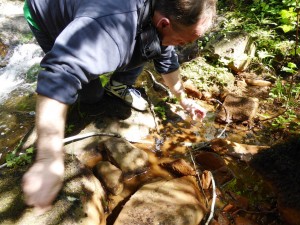 The results of my sediment samples taken on May 15, 2015 at the same site as my earlier water samples led me to ask the question as to what, if anything, has been buried on Lot 21 that could produce the Thorium, Lead and other heavy metal enrichment in the sediments.
The results of my sediment samples taken on May 15, 2015 at the same site as my earlier water samples led me to ask the question as to what, if anything, has been buried on Lot 21 that could produce the Thorium, Lead and other heavy metal enrichment in the sediments.
As the months have passed, residents of the Shawnigan Lake region have continued to raise substantive concerns as to whether or not the operations at the contaminated soil facility are in compliance with the requirements of their relevant permits. On November 16th I rose in the legislature to call for an emergency debate on a recent failure of the contaminated soil site storm water containment and clarification system at the site. I did this after Island Health issued a no-water use advisory “advising residents not to use water taken out of the lake from the south end of Lake Shawnigan, south of Butler Avenue and Verlon Road, due to suspected overflow of water from South Island Aggregates’ site.” This means that residents were being advised “not to use or draw water from the area of the lake for residential or commercial use, including bathing, personal hygiene, drinking and food preparation.”
The Water Containment and Clarification System
It doesn’t end there.
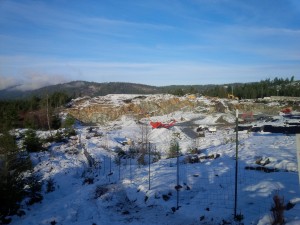 On December 1, 2015 I issued a press release calling on the BC Government to immediately cease operations at the site after the Cowichan Valley Regional District released a report from Thurber Engineering Ltd. The report identified serious concerns about surface runoff and throughflow potentially becoming contaminated but not adequately being contained or treated. In particular, the Thurber Engineering Ltd report noted that:
On December 1, 2015 I issued a press release calling on the BC Government to immediately cease operations at the site after the Cowichan Valley Regional District released a report from Thurber Engineering Ltd. The report identified serious concerns about surface runoff and throughflow potentially becoming contaminated but not adequately being contained or treated. In particular, the Thurber Engineering Ltd report noted that:
“The presence of the large volume of water emerging from under the rock armour at the head of the ephemeral stream indicates that runoff storm water sourced from the SIA site is bypassing the sediment pond (i.e by flowing under it) and is being discharged directly onto the land owned by the CVRD”.
This occurred despite the fact that the BC Government mandates that all surface water is required to be “contained on the property and treated in accordance with the permit”.
The water containment facility is shown in Figures 1a and 1c. Figures 1b and 1d illustrate a pool of water immediately beside the treatment facility. The Thurber report identifies this as potentially a source of water that feeds the ephemeral stream and bypasses the containment facility. Frankly, it would be incredibly easy to verify this by simply tagging the water with a dye as is commonly done in municipalities when potential storm/sewer crossovers are detected.
Figure 1: Photographs of the water containment system and the standing pool of water immediately beside the containment system taken on: a), b) November 16, 2015; c), d) from a helicopter on January 6, 2016.
In my view we have a serious situation where contaminated soils are being delivered to the site on an ongoing basis. Yet at the same time very troubling questions have been raised by an independent engineering firm about the functioning of the water containment system. I am beyond astounded that the Ministry would continue to allow contaminated soils to be delivered while the “permittee and their qualified professional(s)” review the situation as per the functioning of the water containment system.
I also remain troubled by the frequent referral to an ephemeral stream in numerous reports. By definition, an ephemeral stream is one that exists “only briefly during and following a period of rainfall in the immediate locality.” Yet I was given a tour of the contaminated soil facility on August 5th, 2015 and it had been very dry. At that time the stream was running and the pond was still present. This suggests to me that a component of water found in the pond has originated from below the surface.
Sulphur and Sodium Chloride Contaminants
The Shawnigan Lake residents most recently have been expressing increasing concern over the fact that contaminated soils high in sulphur and salt (sodium chloride) from Pacific Coast Terminals in Port Moody are being dumped in the operating facility.
Water in the “ephemeral creek” has been tested several times by the Ministry of Environment. The Ministry of Environment reported (see SW1) that water in the ephemeral creek (about 15m from where the containment pond discharges into it) on November 14, 2015 had:
- a sulpher concentration of 56.1 milligrams per litre
- a sodium concentration of 21.8 milligrams per litre
Samples collected by the Ministry of Environment on November 17,2015 at the same location on November 14 revealed (see E292898):
- a sulpher concentration of 23.2 milligrams per litre
- a sodium concentration of 9.16 milligrams per litre
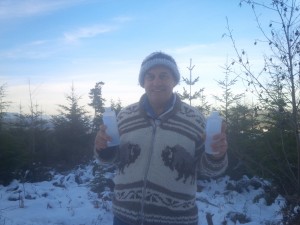 A summary of these results was put together in the media package provided by Shawnigan residents on January 6, 2016.
A summary of these results was put together in the media package provided by Shawnigan residents on January 6, 2016.
On the same day I took the opportunity to collect further independent samples. After the aerial tour of the site, I hiked around the property and collected two samples (Figure 2a and b) in the vicinity of where the Ministry of Environment collected their samples. I collected a third control sample in Shawnigan Creek upstream from the contaminated soil facility at almost the exact same location of where I collected my control sample in my earlier sediment analysis (see Figure 2c).
Figure 2: Photographs of the location of where the two water samples were taken in the ephemeral creek: a) at a location a few metres upstream from where the Ministry of Environment collected their water samples (UP POND in the January 6, 2015 water analysis data); b) at the location where the Ministry of Environment collected their water samples (DOWN POND in the January 6, 2015 water analysis data). c) Photograph of the location where I collected my control sediments for my earlier analysis. The control water sample was taken a few metres north of this location (Control at bridge in the January 6, 2015 water analysis data).
My three resulting water samples were analyzed by Jody Spence at UVic using a Thermo X-Series2 Quadrupole ICP-MS. All water samples were filtered through clean (new) polyvinyl filters (0.45 um). A separate filter used for each sample. The first 10 mL of each sample was flushed through to condition the filter before collecting the 10 mL aliquot for analysis. After filtration, the samples were acidified with 0.2 mL of 16 Molar Environmental Grade Nitric Acid.
The resulting January 6, 2015 water analysis data reveal the following results:
Sample 1: UP POND; Figure 2a
- a sulpher concentration of 33.3 milligrams per litre
- a sodium concentration of 13.5 milligrams per litre
Sample 2: DOWN POND; Figure 2b
- a sulpher concentration of 32.4 milligrams per litre
- a sodium concentration of 13.1 milligrams per litre
Sample 3: Control at bridge; Figure 2c
- a sulpher concentration that was undetectable to the limit of machine precision
- a sodium concentration of 1.85 milligrams per litre
These results are consistent with the elevated sulpher and sodium concentrations found by the Ministry of Environment back in November.
Two additional observations are worth noting. On the day I collected my samples there was no water pooled in the water containment facilities sedimentation pond (it was largely covered with snow). The pond immediately beside it was quite large and the surface appeared to be frozen. In addition, a distinct smell of sulpher hydroxide was noted at the property line where the containment facility allows water to enter the ephemeral creek.
Summary
Based on several independently-collected water samples collected over the last few months it is clear that water in the “ephemeral creek” leaving the property contains elevated levels of sodium and sulphur. The fact that sulphur was undetectable in the control sample makes it pretty clear that the contaminants originate from the Pacific Coast Terminal soils that have been dumped in the operating facility.
While it is clear to me that there is no immediate health concerns to the residents of Shawnigan Lake from the samples I collected, questions still remain. In my opinion it would be prudent for the Ministry of Environment to immediately cease operations at the facility in order to:
- Ensure the water containment facility is actually functioning as required by permit;
- Determine where the water in the pond is coming from and whether it drains into the ephemeral creek;
- Conduct an assessment as to the cumulative effects of high sodium, sulphur and potentially chemicals that will make there way to Shawnigan lake through the ephemeral creek. The site has only just opened and will be in operation for decades.
Failing to take these immediate steps I believe would be a continued dereliction of duty by the Ministry of Environment.
COP21 Targets Require Ambitious Policy
Media Statement December 14, 2015
COP21 Targets Require Ambitious Policy
For immediate release
Victoria B.C. – Andrew Weaver, MLA for Oak Bay – Gordon Head and Leader of the B.C. Green Party welcomes the Paris climate agreement but cautions that it is only a first step towards reducing global greenhouse gas emissions.
The COP21 accord is non-binding and is designed to keep global temperatures to well below 2°C above preindustrial levels. “The world has already warmed by about 1°C and existing atmospheric carbon dioxide levels commit us to a further 0.6°C,” notes Weaver. “When you add in an additional warming of between 0.2 and 0.3°C from the permafrost carbon feedback, it makes it imperative that nations put forward far more aggressive greenhouse gas reduction targets than have been offered to date. The existing voluntary national targets make it virtually certain that 2°C warming will be broken this century.”
While the agreement includes all 195 nations and has legally binding provisions for the five year review, the targets are still voluntary and lack the policy measures needed to achieve the collective goal. Furthermore, until the World Trade Organization is part of the negotiations, it will be very difficult for any nation to enact policies that account for discrepancies in transjurisdictional emissions. “Countries that aggressively act to reduce emissions through carbon pricing need the ability to apply carbon tariffs on imports from jurisdictions that don’t,” adds Weaver.
“I am cautiously optimistic” said Andrew Weaver, “all countries have agreed to reduce emissions. In addition, developed nations have agreed to assist developing nations in adapting to a changing climate and to facilitate the transfer of clean technology.”
Andrew Weaver further notes that “For Canada to be recognized as a climate leader British Columbia must be part of the solution. We have an enormous opportunity in B.C. to invest in renewable energy such as solar, wind, and geothermal, as well as to further advance these sectors and globally export technology and expertise.”
British Columbia has the opportunity to harness natural resources, a nascent and growing clean tech sector, and skilled workers ready to accept the challenge. The current government, however, is actively heading the opposite direction by continuing to support high carbon industries like LNG and thermal coal. They have already stated they will not meet the mandated 2020 targets and the assurance by Premier Clark that LNG exports will somehow offset growing provincial greenhouse gas emissions is completely misguided.
“Ambitious targets require ambitious policy,” said Andrew Weaver. “To achieve a national transition to a low carbon economy our policies, political support, and subsidies need to shift away from backing the fossil fuel industry and start actively encouraging the clean technology sector.”
Media Enquiries
Mat Wright
Press Secretary – Andrew Weaver MLA
1 250 216 3382
mat.wright@leg.bc.ca
Ministry abdicates its responsibility to Shawnigan Lake residents
On December 2 I sent a letter to the Minister of Environment. In the letter I expressed my concerns regarding the ongoing activities at the site in the Shawnigan Lake watershed where contaminated soils are being delivered. My letter was initiated in response to the release of two Cowichan Valley Regional District (CVRD) reports.
As noted in the Thurber Engineering Ltd report, “The presence of the large volume of water emerging from under the rock armour at the head of the ephemeral stream indicates that runoff storm water sourced from the SIA site is bypassing the sediment pond (i.e by flowing under it) and is being discharged directly onto the land owned by the CVRD”.
Below I provide photographs of the sediment pond [panel a], as well as a large pond beside the sediment pond [panel b]. The report suggests that much of the water bypasses the sediment pond and leaves via an ephemeral stream [panel c].
I have yet to receive a response to my letter but I note that the Ministry responded directly to the CVRD’s letter sent on the same day as mine. The ministry has also detailed their timeline of compliance and monitoring.
In the Ministry’s response to CVRD they state:
The Letter
The Honourable Mary Polak
Minister of Environment
Room 112
Parliament Buildings
Victoria B.C.
December 2nd 2015
Dear Minister Polak,
On December 1st 2015 the Cowichan Valley Regional District released an engineering report, commissioned by the district, evaluating unauthorized water discharge from the contaminated soil treatment site managed by Cobble Hill Holdings Ltd. near Shawnigan Lake. The Thurber Engineering report titled ‘Storm Water Management Observations, South Island Aggregate’ is clear and blunt in its assessment:
“The presence of the large volume of water emerging from under the rock armour at the head of the ephemeral stream indicates that runoff storm water sourced from the SIA site is bypassing the sediment pond (i.e by flowing under it) and is being discharged directly onto the land owned by the CVRD”
The report also concluded the sediment pond meant to hold water runoff from the site is ‘relatively porous’ and therefore completely inadequate as a containment system.
In addition, on November 18th 2015, Jennifer McGuire, Executive Director of the Ministry of Environment Regional Operations Branch, issued a formal warning letter to Cobble Hill Holdings regarding permit PR-105809 raising concerns regarding the ability of the operator to ensure effective operation of the site and to manage unauthorized discharges in accordance with the license.
These are only the most recent developments following months of gathered evidence and serious concerns on water quality raised by the residents and property owners around Shawnigan Lake, the CVRD, Island Health, Cowichan Tribes, myself and others.
In light of this I am asking you use your authority and prerogative as Minister of Environment to:
1: Immediately suspend permit PR-105809 and order the operator to cease operations.
2: Commission an independent engineering firm to evaluate water source, flow and containment, bedrock analysis and operating and emergency procedures to determine if the site can be remediated to comply with the permit.
I am available to discuss this at your convenience and look forward to your immediate attention.
Sincerely
Andrew Weaver
MLA – Oak Bay – Gordon Head
Protecting Old Growth Forests on Vancouver Island
This week I sent a letter to the Minister of Forests, Lands and Natural Resource Operations regarding the ongoing dispute in the Walbran Valley. I was inspired to do so after receiving thousands of emails from British Columbians expressing their concerns about the Teal-Jones Group’s intention to log cut block areas in the Walbran Valley and other old growth forests on Vancouver Island.
Old growth forests provide many important environmental and social functions, serving as homes to numerous species at risk and as popular recreation areas for locals and tourists alike. It is time that they receive a level of protection that reflects their importance to both our ecosystems and our economy.
To ensure this, it is necessary that we take an ecosystem focused and science based assessment in decisions concerning forestry management, and I am concerned that this is not what our government is doing. Instead, by playing the environmental and social concerns off against economic ones, they are merely allowing an unsustainable status quo to continue.
Protecting our remaining old-growth forests while building our forest industry do not have to be competing objectives. It is time that we take a closer look at the status quo in forestry management in our Province, and ensure that we are looking at all the factors – social, environmental and economic – when we are making decisions.
Please see below to read my letter to the Minister in full.
Letter to the Minister of Forests, Lands and Natural Resource Operations
Dear Minister Thomson,
I am writing to you with regards to the ongoing dispute in the Walbran Valley, concerning the Teal-Jones Group’s intention to log a cut block in the area.
My office has received over 3000 emails from British Columbians, expressing their concerns about the continued logging of old-growth forests on Vancouver Island.
Old growth forests serve numerous environmental and social functions that need to be better protected. I am concerned that the government’s current approach to this issue implicitly plays the environmental and social concerns off against economic ones.
Similar to how this government has gone about updating our water management, it is essential that we take an ecosystem focused and science based assessment in decisions concerning forestry management. Anything less is merely allowing an unsustainable status quo to continue.
Protecting our few remaining old-growth forests while building our forest industry do not have to be competing objectives. It is time that we take a closer look at the status quo in forestry management in our Province, and ensure that we are looking at all the factors – social, environmental and economic when we are making decisions.
Within this context, I am hoping to get an explanation as to how the government is making its decisions regarding logging in old-growth forests on Vancouver Island.
I look forward to your response.
Sincerely,
Andrew Weaver
MLA, Oak Bay-Gordon Head

